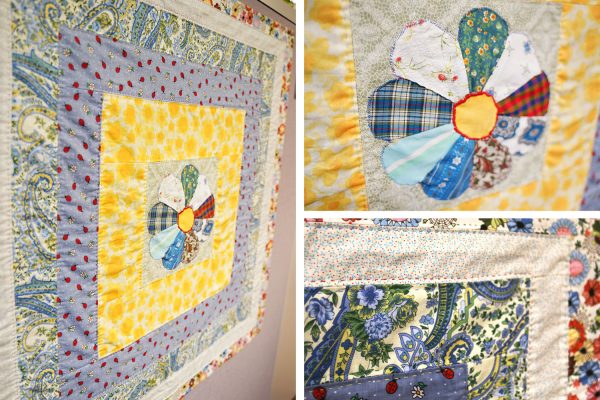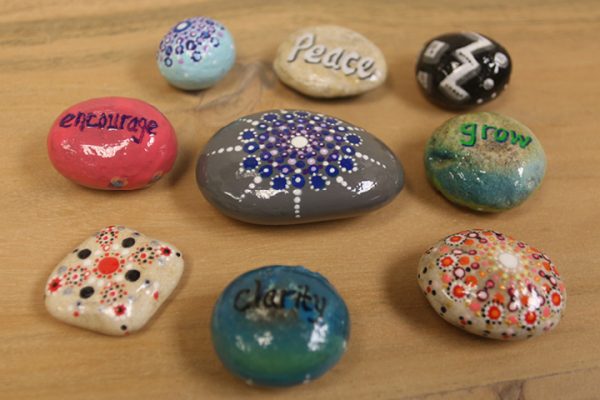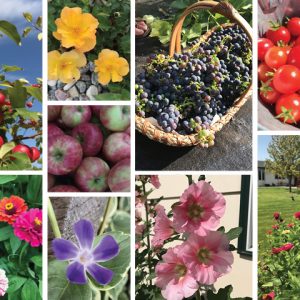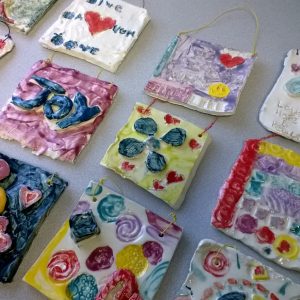 by Connie DeKrey, LBSW, CT
by Connie DeKrey, LBSW, CT
When I was a very small child, the favorite gift I received at Christmas was my first set of Play-Doh. Naturally I was drawn to the brightly colored lids atop enticing yellow cans. But oh, then to open them, revealing the soft, malleable mass of possibilities! I would occupy myself for hours, letting my imagination lead as my hands molded tiny dishes, animals, even puppets. Whether I was happy, lonely, tired or tearful, it seemed I could find comfort in the quiet creativity of this craft. I dare say, it set the stage for my lifelong love for creative media, which has taken on many shapes and forms throughout the years.
Some years ago I attended the musical drama, “Quilters,” by Molly Newman and Barbara Damashek. The play depicts the beauty, terror, joy and struggles of women who lived life in pioneer days. Pivotal life points—childhood, marriage, birth, death—are portrayed through a patchwork of scenes. The final mosaic, a testament to the resilience of the human spirit even through adversity, is powerful and memorable.

I am privileged to share the company of a number of people who are quilters. In our current day and age, this process of quilting, while no longer viewed as a necessity, is certainly still an art form. To enter a fabric shop with a group of these stitch-eager friends is quite an adventure, as each woman gravitates to a particular palette or texture that speaks to her. Ultimately, the resulting textiles that appear weeks or months down the road are beautiful evidence not only of patience and talent, but also of something deeper—a need to plunge into shape and color and emerge with an expression of feelings for which mere words would not suffice.
My mother-in-law was past middle-age when she took up the hobby of oil painting. This challenging art form caused her to look at everything in the world around her in a completely different way. Her artist eyes would constantly ask, “How should this be painted?” In the decades following, whether in times of tremendous joy, trying sadness or deep contemplation, Mom was drawn to the comfort of her canvas and palette.
Scientific research indicates manual activity prompts integration between our left and right brain hemispheres, and therefore, can help facilitate expression and communication of feelings. Whether used in a group setting or one-on-one, hands-on approaches can be useful tools in encouraging the bereaved to coax feelings to the surface and experience freedom through expression.

A grief-stricken father may find solace in working with wood. A bereaved daughter may turn to the familiarity and comfort of her clay and pottery wheel. A sorrowful spouse may seek reflection while composing moving photography. These mourners have found ways to literally “lay hands” on their deep sense of loss.
Each spring and autumn, Hospice of the Red River Valley conducts a program for children who are impacted by the death of a loved one. The Youth Journeys curriculum incorporates a variety of hands-on projects as part of our teaching. These creative outlets accompany a teachable concept relating to change, feelings, memories or self-care.
At the close of the day, as all age groups come together for a final time of reflection, it is apparent the children are eager to show their accompanying adults the things they have made, and share any new thoughts the projects helped them to explore. Although each child started with raw materials from the same supply of resources, the finished products they later carry in their hands—memory boxes, pillow cases, paintings—are all very individual, attesting to the unique grief journey of each child.
Ancient Greek philosopher Aristotle posited that “art imitates life.” I would suggest that art allows for the expression of life and the vast array of emotions and experiences that accompany it.
Editor’s note: This article is part of a three-part series that explores coping with grief through the expressive arts. Read Part 1 here and Part 3 here.
Connie DeKrey, LBSW, CT, is a grief specialist at Hospice of the Red River Valley. She joined the organization in 1993, working in patient care as a medical social worker for 10 years and now as a grief specialist in the grief support department. She particularly enjoys the opportunity to provide education to individuals and groups about living, dying and grief.
Learn More
Hospice of the Red River Valley’s grief support program is a free community resource available to anyone who has experienced a loss through death, whether they had hospice services or not. We welcome the opportunity to help guide your journey from grief to hope. If you or a loved one needs grief support, please contact us.
About Hospice of the Red River Valley
In 1981, Hospice of the Red River Valley was founded on the belief that everyone deserves access to high-quality end-of-life care. We fulfill our nonprofit mission by providing medical, emotional, personal and spiritual care, as well as grief support to our patients, their families and caregivers during a tender time in life. Our staff helps those we serve experience more meaningful moments through exceptional hospice care, 24 hours a day, 365 days a year, wherever a patient calls home. The organization serves more than 40,000 square miles in North Dakota and Minnesota, including in and around Bismarck, Detroit Lakes, Devils Lake, Fargo, Fergus Falls, Grand Forks, Lisbon, Thief River Falls, Valley City and many more communities. Hospice of the Red River Valley offers round-the-clock availability via phone, prompt response times and same-day admissions, including evenings, weekends and holidays. Contact us anytime at 800-237-4629 or hrrv.org.




